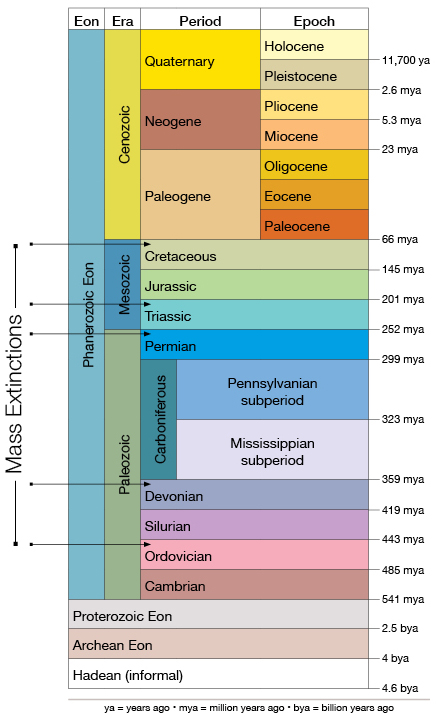Mass extinctions
 Mass extinctions are episodes in which a large number of plant and animal species become extinct within a relatively short period of geologic time—from possibly a few thousand to a few million years. After each of the five major mass extinctions that have occurred over the last 500 million years, life rebounded. However, it took tens of millions of years of evolution for species diversity to be restored. Based on evidence in the fossil record, scientists have identified major extinction events at the end of these geologic periods:
Mass extinctions are episodes in which a large number of plant and animal species become extinct within a relatively short period of geologic time—from possibly a few thousand to a few million years. After each of the five major mass extinctions that have occurred over the last 500 million years, life rebounded. However, it took tens of millions of years of evolution for species diversity to be restored. Based on evidence in the fossil record, scientists have identified major extinction events at the end of these geologic periods:
- Cretaceous Period — 66 million years ago
- Triassic Period — 201 million years ago
- Permian Period — 252 million years ago
- Devonian Period — 359 million years ago
- Ordovician Period — 443 million years ago
The mass extinctions at the end of the Cretaceous Period is the most familiar because it brought about the demise of the dinosaurs. However, the most dramatic one, in terms of number of species lost, occurred at the end of the Permian Period. Both events were so significant they each marked the end of an era—the Mesozoic Era for the end-Cretaceous extinction and the Paleozoic Era for the end-Permian extinction.
Resources